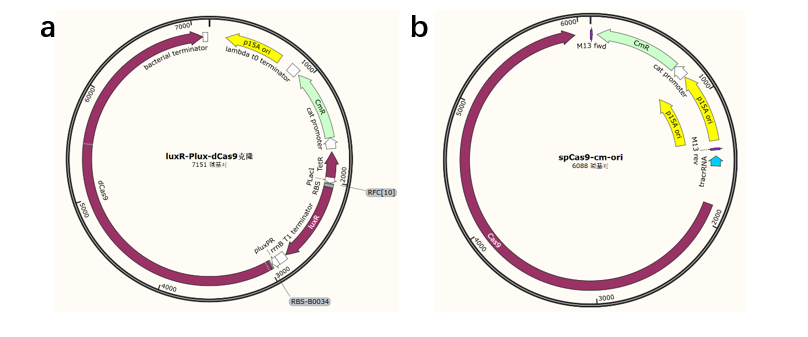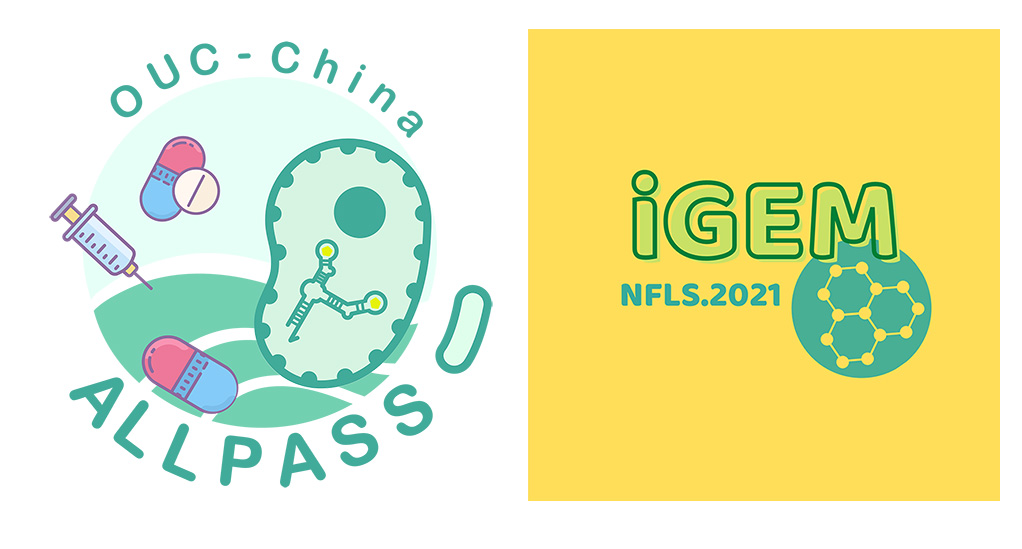

ZJUT

What do our partner up to:
According to literature, various RNA molecules in urine or blood have proven to serve as biomarkers for the diagnosis and prognosis of various diseases. Herein, they are developing a cell-free RNA biosensor which comprises a Cell-Free system, engineered DNA transcription templates and RNA-responsive CRISPR/Cas9 system. Once the sensor is exposed to specific RNA, the visible outputs from deGFP can be visualized by naked eyes.They hope their project will provide patients with a simple, safe, low-cost diagnostic method.
This year, we built comprehensive collaboration with ZJUT which can be devided into 3 modules: Modle, hardware and wet lab.

Model:
We both built a deterministic model for gene expression and used simbiology for solving the ODEs. Discussions about simbiology were made to.
Since the tetR gene plays an important role in both of our projects, we have collected and shared the biochemical constants of tetR, such as the kinetic rate constants of its binding to tetO.
We shared many useful suggestions in data fitting with them. They also simulated the behavior of our gene circuits in a cell-free system, and the trend of simulation results matched to the literature well.

Hardware:
Both of our teams’ projects are biosensors. And the reporting module is believed to be the key part of a sensor. After discussion, we decided to try different fluorescence detection methods separately. We decided to measure fluorescence by analyzing the RGB(mainly G) value to report the intensity of fluorescence. Besides, we choose to integrate analysis program into a Wechat applet, enabling smartphone users to easily reach it. ZJUT-China decided to build a fluorometer using simple electronic components. After comparing the results, we found that the smartphone based method are pron to detect low density fluorescence, while electronic components have more accuracy on high fluorescence intensity.

Wet Lab:
Our first online communication was hold on July 17th. During the meeting, both parties presented their project principles and designs in detail. Both our team devoted on developing a biosensor. Our reporter was called 3WJdB which was a RNA fluorescent aptamer. This reporter was initially expressed in the Cell-Free system, but we applied it in the whole cell biosensor instead. ZJUT chose cell free system. We then came up with the idea that they can help us to prove the function of our genetic circuit in cell free system.
On the second meeting, which was hold on October 3rd, we discussed the difficulties we had met,. We both found that Cas9 related plasmids have very long constructing circle. This fact made us experimental process stacked. But luckily, the plasmid we chose, namely dCas9 was expected to be constructed earlier than spCas9 which was chosen by ZJUT. After comparing the plasmid map in SnapGene , we found these two plasmids were very similar (Figure 3). Meanwhile, we confirmed the sequence of gRNA, except for the 20nt targeting sequence the rest of the sequence is identical, which means ZJUT can directly replace their spCas9 plasmid with the dCas9 plasmid.

We mailed ZJUT our successfully constructed containing 3WJdB element.Eventually, they commissioned the construction of dcas9 plasmid and also validated the Cell-Free system with dCas9 plasmid. They found that the effect of dCas9 plasmid was higher than that of cas9 plasmid, which might be because dCas9 plasmid was induced by AHL to increase its expression.

What's more, they found that the cell free system was very sensitive to the concentration of antibiotics, which required only 0.5 ng/ml to activate the expression of fluorescence. Interestingly, however, as the antibiotic concentration in the system increased, the fluorescence expression showed a decreasing trend, which was exactly the opposite of our expected, intra-bacterial experiments conducted by our team

Here are the analysis and speculation of this phenomenon: There exists the phenomenon that the gradient dependent fluorescence trend may be different(usually opposite) within different concentration range. We can see from the graph below that the trend in the second testing point(1 ng/µl) has already opposite to our expectation. One possible speculation is that the cell free system is ultra-sensitive, and 1 ng/µl of antibiotic has already exceeded the operating range.We can also see that the fluorescence intensity corresponding to 0ng/µl antibiotic is also 0. This fact indicated that the basal leakage of our genetic circuit is pretty good in cell free system. In the future, we would also like to try cell free system to achieve our goal for it have better basal leakage rate and other adorable attributes such as controllability and safety. And to further prove the concept, we have to design more testing point with lower antibiotic concentration range(at least below 1 ng/µl according to the data ZJUT provided)
Nanjing_NFLS

What do our partner up to:
The degradation of residual tetracycline antibiotics in the environment by antibiotics is a practical problem related to ecology and human health in recent years. There is an urgent need to develop efficient and convenient tetracycline (aureomycin) antibiotic degradation technology. We found that microbial fuel cells can degrade aureomycin through Fenton reaction by modifying the cathode. At the same time, in order to improve the degradation rate, we located the biofilm of battery anodethe for biofilm activity is closely related to the efficiency of microbial fuel cell. In the process of film formation, the process of bacterial communication through chemical molecules is called quorum sensing. Through over expression of quorum sensing system in electrogenic bacteria, we greatly improved the efficiency of fuel cell, so as to improve the degradation efficiency of aureomycin.
Our two teams have very similar topic that is solving the environmental problem of antibiotic contamination. Since iGEM is a competition problem oriented, thus we collaborate a lot on integrated human practice.

Thanks to Nanjing_NFLS, we reached Mr.Jiao Yanlin, who is the director of Hengrui pharmaceutical biotechnology company, and had an online interview for we live in different cities, Qingdao and Nanjing respectively. Mr. Jiao got his master degree of environmental engineering from Jilin University. From 2010 to 2021, he engaged in operation and maintenance management of sewage, waste gas and solid waste in the environmental protection station of Hengrui pharmaceutical branch company. At present, he is incharge of environmental protection management in Hengrui pharmaceutical biotechnology company.
Thanks to Nanjing_NFLS, we reached Mr.Jiao Yanlin, who is the director of Hengrui pharmaceutical biotechnology company, and had an online interview for we live in different cities, Qingdao and Nanjing respectively. Mr. Jiao got his master degree of environmental engineering from Jilin University. From 2010 to 2021, he engaged in operation and maintenance management of sewage, waste gas and solid waste in the environmental protection station of Hengrui pharmaceutical branch company. At present, he is incharge of environmental protection management in Hengrui pharmaceutical biotechnology company.
Mr.Jiao told us that every drug factory has its own sewage water treatment system. Drug factories usually have to reach two criteria before emitting into municipal sewage pipeline. One is about some general index, such as chemical oxygen demand (COD), ammonia nitrogen (NH3-N) and so on. Another criteria is the indicators of acute toxicity, called Discharge standards of water pollutants for pharmaceutical industry Chemical synthesis products category, for Hengrui drug factory specifically. After reading the documents, we found that antibiotic was not included as one of the acute toxicity substances.
However, Mr.Jiao told us that the drug factories which mainly produce antibiotic drugs follow another discharge criteria, which is called Discharge standard of water pollutants for pharmaceutical industry Fermentation products category. In this category, the limited proportion of sewage containing antibiotic was regulated.
As required by the Environmental Protection Bureau, a third party is regularly entrusted to test the acute toxicity of sewage. Water Quality-Determination of the Acute Toxicity-Luminescent Bacteria Test and Zebrafish(Danio rerio) eggs method are the common used method. The mechanism is that the acute toxicity of water sample to be tested can influence the luminous intensity and survival rate of luminescent bacteria and zerbafish eggs respectively. But this two methods have to be done by third party testing companies. Thus, Mr.Jiao told us that sewage treatment plants of pharmaceutical factory are looking forward to rapid testing products to detect the toxicity of sewage, but not just antibiotics.
Mr.Jiao emphasized that there is no suitable means to judge the toxicity of sewage to microorganisms at present. Like what Mr.Xue in Haibohe sewage treatment plant had already told us, the sewage treatment process is mainly anaerobic process and aerobic process. The anaerobic microorganisms in the anaerobic process are mainly methanogens, which are particularly sensitive to toxic substances. If the antibiotic concentration is too high, the anaerobic process cannot be functional, and the operation efficiency is very poor. At present, there is no good rapid detection product in China.
Mr.Jiao told us a story that in the first half of the year, a detection instrument in Canada measured the content of active substance ATP in activated sludge(containing anaerobic bacteria) to indicate the toxic substances. More specifically, it is achieved by comparing the amount of ATP in 100ml activated sludge under normal conditions and the change after immersion in toxic sewage. Mr.Jiao was super excited about this products but didn’t buy it for the price is very expensive. As such, Mr.Jiao was very pleased to hear that we are developing a rapid testing products for antibiotic detection with generally low price. He praised our products very useful and meaningful. And he considered it to have great market potential. Because it is impossible for the sewage station of a private pharmaceutical factory to be equipped with a HPLC and hire technicians.
At the end of our interview with Mr.Jiao, he motivated our directions for improvement. He told us that Hengrui pharmaceutical factory used to collaborate with Zhejiang University who screened for high salt and high toxicity tolerant microorganisms , using the bacteria in sewage station of Hengrui pharmaceutical factory as the resource. Mr.Jiao recommended us to consider the attributes of the sewage we planed to test with our whole cell biosensor, such as high salinity and high acute toxicity. Combing with the intention of Zhejiang University research group, we may use a high salt and high toxicity tolerant bacteria as our chassis organism.
Another motivation is another possible application scenario: waterworks. Mr.Jiao told us that the duality of antibiotics: are the inhibition of activated sludge bacteria and the negative influence on the drinking water when flow to natural water. Drinking water containing antibiotics is a risk to human health, thus detecting the concentration of antibiotic in waterworks is meaningful.
We along with other 3 teams who’s projects were also related with new pollutants, mostly detection and degradation, formed New Pollutants Alliance. We hold several online meetings and had cross collaboration. Most importantly, we organized an online workshop named New Pollutants Workshop. The workshop was hold on September 25th, and (See more detail on our Initiator of New Pollutants Alliance page)
Our projects are logically connected just like upstream and downstream. The detection results consolidate the necessity of degradation and can also prove the effectiveness of degradation. Nanjing_NFLS mailed their samples to us, which contained a series of antibiotic level. These samples were extracted from their electrolytic cell in various time points, namely the later the water sample were extracted, the lower corresponding antibiotic concentration was expected. What we feel really grateful was that they tested the antibiotic concentration using liquid chromatography, thus the data was very trustworthy. That is to say, we could also test the accuracy of our whole cell biosensor by testing their sample, seeing their samples as standards.



The testing results are shown below. The FI(fluorescence intensity)/OD600(optical density 600) means the unit fluorescence intensity, which was expected to indicate the concentration of antibiotic in water sample. As we can see, in almost of the time points, the FI/OD600 is positively correlated with the antibiotic concentration tested by liquid chromatography. Besides, FI/OD600 had a steady decline over the detection time. This pattern is different from our regular experiments detecting standard antibiotic solution. We always witnessed bell-shaped FI/OD600 curve instead a downward sloping line. For this phenomenon, we haven’t came up with solid conclusion.
We also expected to have further collaboration on our hardware. For example, integrating our biosensor in the inlet of their electrolytic cell can report whether the contaminated water is worth antibiotic degradation. And if our biosensor is added on the outlet of their electrolytic cell, it can report whether the treated water is “clean” enough to discharge. However, since our hardware were designed respectively, the physically combination form(connection) still need more work to be down. We hope to have further collaboration in the future.
Both of our two teams see our products can be implemented in real world, having both necessity and possibility. We then wrote our own business plan respectively. Thanks to Nanjing_NFLS, we reached the vice president of Nanjing Wandes Environmental Protection Technology Co., Ltd, who’s name is Yuan Daoying. He read our business plans and provided us precious advice. His comments were also very encouraging!




